- Home
- Tom Clancy
Special Forces: A Guided Tour of U.S. Army Special Forces Page 15
Special Forces: A Guided Tour of U.S. Army Special Forces Read online
Page 15
Inside the Rucksack: Special Forces Staff
What soldiers carry and don’t carry says volumes about how they do their work. Military operations require tools—typically, complex tools, and a lot of them—weapons, gear, equipment, vehicles, clothing, electronics. They are, in some ways, the language of the military.
Lean and adaptive though they are, Special Forces soldiers partake of this abundance, as all soldiers do.
Yet does it follow that “special” forces require “special” tools for their “special” missions? Or, to put this another way, what kinds of stuff do SF soldiers carry with them when they go downrange?
There’s no simple, uniform answer to either of these questions. Yes, SF guys have “special” equipment and weapons, but far fewer of such things than you might imagine. James Bonds they are not. And then, owing to the wide variety and range of SF missions, there are many and various loads they might take on a mission or assignment. On raids or reconnaissance missions, the load may be limited to what can be carried on soldiers’ backs or thrown out of a helicopter or transport aircraft, while a large-scale training or humanitarian relief effort might see SF teams going in “heavy,” with a C-17A Globemaster to carry the vehicles, equipment, and supply pallets.
On the other hand, SF soldiers do take with them a few standard items on almost every kind of mission they run.
While individual SF soldiers are talented and skilled technicians in their individual specialties (weapons, engineering, communications, etc.), all are still brutally effective warriors. The problem is that SF soldiers normally go into the field carrying only light and personal weapons, and a far from substantial ammunition load. Conventional Army units can look for ways to bring their heavy firepower to bear against an enemy; SF soldiers will usually try to outsmart their opponents. Special Forces teams must therefore choose their fights carefully, and always leave a back door to escape through, if things go south. This places a premium on careful selection of the gear they wear, and everything they carry.
Until very recently, virtually everything Special Forces troops used, wore, or carried was either normal military-issue weapons and gear or else was commercially available. Very little of it was purposefully designed for Special Forces use.
But this—finally—has begun to change.
Though SOCOM (the unified command that operates Special Forces Command and the other Special Operations Forces) has been in operation for better than a decade and has its own funding stream, separate from any parent command, it takes a specially trained staff of procurement professionals to buy anything in the U.S. government, and setting up such a staff takes time. The various SOCOM components have now done that, and their own procurement and developmental commands are up and running. (SFC’s shop is known under the military staff designation of G7.)
Started up early in 1999, SFG’s G7 shop is commanded by a seasoned SF officer, Lieutenant Colonel Dan Moore. Lieutenant Colonel Moore and his staff of procurement gurus face a dauntingly complex task. For openers, SF soldiers see the world (and their tools of trade) through different lenses from their “normal” infantry brethren. They can expect to visit places, face situations, and meet people “normal” soldiers would never expect to encounter. SF operations are hardly ever like normal Army operations. Thus, everything SF soldiers use must be viewed in a different context from that of a conventional Army or Marine unit.
On a “normal” mission, to use an obvious example, SF soldiers will not expect to fight. That is—if the mission is properly run and the breaks go right—an SF team should never need their weapons.
Or, to use another example, saving a pound or two on a rifle or backpack might seem trivial to most soldiers, who can usually just throw their stuff into the back of a truck or personnel carrier during the ride to the battlefield. But for SF personnel, who expect to carry everything they need for a mission on their backs, those two pounds might represent enough food for another day of operations, or another thirty rounds of 5.56mm ammunition. Like mountain climbers preparing for a climb, SF teams about to go downrange do a lot of trading off. The wrong choice can easily turn deadly, so they choose very carefully.
Meanwhile, SF units have often had to “make do” with weapons, equipment, and supplies that were hardly optimal to their kinds of operations. Even so, the Special Forces team has done their best to make maximum use of the existing military inventory of such items (for all the obvious reasons).
But now, SFC’s G7 shop (paid for by SOCOM’s independent line of funding) provides the SF team with the means to go outside the Army supply system to find exactly what they need (within obvious limits).33
To make all this work, Lieutenant Colonel Moore and his staff have to carefully choose the “special” items they want to buy or develop. That means they must carefully leverage their limited supply of SOCOM dollars and resist the temptation to do everything at once.
So far, they have had some exciting successes, most notably the modification of the relatively heavy and large M16 combat rifle into the very useful, small, and lightweight M4 carbine.
But SFC’s G7 shop and the other SOCOM procurement agencies have not limited their creative attention to weapons. For example, SOF units have led the drive to develop new, lighter-weight rations that would be better suited to patrol operations than the Meals Ready to Eat (MREs) that have been the diet staple for American field units for over a decade. These “performance enhancing” foods are proving popular not only in SOF units, but in the entire Army.
Encouraged by achievements like these, Lieutenant Colonel Moore and his team expect to influence even bigger changes in the future. At the same time, they are happy to be making a difference in the operations of SF soldiers today. Lieutenant Colonel Moore and his team are now sending SF units downrange better equipped than at any time in their history.
One final addition: Earlier I said that as long as their mission is correctly executed, SF soldiers should never need their weapons. Does that mean that SF soldiers can safely travel unarmed? Hardly. No SF soldier goes anywhere without the ability to turn instantly into an armed warrior. No SF soldier would ever go downrange without his full fit of personal weaponry... even on what are called humanitarian or other “peaceful” missions. Too often, Special Forces personnel have found themselves thrown into the middle of a firefight (or a revolution) without warning. It is a sign of the growing maturity of the American military that we no longer send military personnel overseas naked of weapons, and the authorization to use them when threatened. How much force and when to apply should and usually is left to the professional warriors in the field, as it should be. Let us hope that our military and professional leaders continue to show the same kind of common sense.
And now—armed with these thoughts and paradoxes—let’s look at the stuff SF troops use and carry.
Carrying Stuff: Rucksacks and Containers
No matter how skilled they are at reducing the weight and bulk of what they carry to missions, Special Forces soldiers still have a lot of things to carry there and back. How to carry it is a continually daunting task both for individual soldiers and for the teams.
Depending on the mission, a Special Forces soldier may be faced with lugging a load exceeding his own body weight. For example, his job might include carrying a heavy load of demolitions gear, such as C4 explosive, several hundred pounds of which may be needed to drop a heavy bridge or structure. Even with the explosive payload spread over ten men in a team, there’s going to be a lot of stuff on everyone’s back. Prior to the Desert Storm ground war, some members of the Special Reconnaissance teams that were inserted deep behind enemy lines carried loads of over 200 lb./91 kg. several miles/kilometers before they reached their hide sites. Impressive as such tasks of brute strength might be, they are blessedly rare.34 All the same, Special Forces soldiers still need containers to pack all their stuff into so they can lug it to where it is going to be used.
Classic ALICE pack systems on the backs of
Special Forces candidates. The ALICE system is about to be replaced with a more modern system, with better load carriage characteristics and an internal hydration system.
JOHN D. GRESHAM
Packs and Belts: ALICE and MLS Gear
There are two long-standing Special Forces symbols—the Green Berets and the old rucksacks the men once carried.35 Though this now-obsolete piece of field gear still occasionally shows up as a daypack, it has long since been replaced as a means of moving an SF soldier’s load.
What has replaced it?
If you read the official fine print of every SF unit’s designator, you find the word Airborne in parenthesis. This is not an empty word: It has consequences. It means, for example, that the primary load-carrying system of the SF soldier must not only hold stuff and have straps, it must be compatible with jumping out of an airplane doing up to 130 knots.
For more than a decade, the standard personal load-carrying system has been known by the long-winded name of All-purpose Lightweight Individual Carrying Equipment (ALICE). The ALICE system is composed of a large pack, aluminum frame with kidney pad and cargo shelf, and shoulder straps. It is designed to carry large loads and distribute the load across the back and shoulders; and it can be cus-tomizedto fit a wide variety of personnel and roles. For airborne operations, the ALICE gear is attached to a tether, and is carried between the jumper’s legs until after chute opening (after which the gear is allowed to hang down on the tether, thus reducing the weight the jumper must bear when he lands and allowing a better, injury-reducing landing position).36
Since carrying a heavily loaded ALICE pack is undesirable if you’re expecting a firefight, SF soldiers also have a set of what is known as “Load Bearing Gear” (officially it is known as the “LC-2”)—essentially oversized suspenders with a belt attached. Clipped onto this rig are a variety of pouches and holders. In the event of a sudden firefight or, say, a daylong trek, the ALICE pack can be dropped or cached, and retrieved later. A normal LC-2 load includes six 30-round M16/M4 ammunition magazines, four grenades, two one-quart canteens, a pistol with holster and two spare magazines, a radio, compass, and perhaps a couple of field dressings.
Using these systems, an SF soldier is expected to pack or hang off his body enough ammunition, explosives, weapons, food, water, and other assorted gear to run a three- to five-day mission in the field without resupply.
Meanwhile, there are plans to replace the ALICE system with a derivative of the new rucksack rig that is already going into service with the Marine Corps. Known as the MOdular Lightweight Load-carrying Equipment (MOLLE) system, it incorporates many new features that represent a significant improvement over the ALICE gear.
The Army’s version of the MOLLE system starts with the LBV-88 load-bearing vest, which replaces the old LC-2 harness. Because the vest better spreads the load over the body, allowing more muscles to work at once, it should theoretically allow for carriage of greater weight with more agility for the wearer. To this is attached the pack/frame/pouch section, which can be configured a variety of ways. Each has a 2,300-cubic-inch main pack and frame, over which can be hung or attached a smaller “combat patrol pack” and all variety of pouches.
This section is attached to the vest with quick release fittings, which can be dropped with a single quick movement. The 1,200-cubic-inch combat patrol pack can also be detached and worn separately, providing enough room for a full day’s worth of supplies for operations in the field. There is additionally a built-in water bladder, with a capacity of approximately two quarts/liters, feeding what is called a “hydration system.” Instead of carrying water in a hard water bottle, it comes in a flexible, insulated bladder that lies against the wearer’s back, and which feeds a small hose that allows easy access to the water, even on the move. The outside of the pack is covered with pockets and pouches that have been optimized for various weapons specialties; all have the ability to carry “pooled” equipment and munitions like claymore mines, explosives, electrical batteries, and spare ammunition magazines.
It will be several years before the Army completes its evaluation of the MOLLE system and begins procurement.37 At the same time, the SFC G7 shop is evaluating their own versions of MOLLE, with two versions undergoing tests right now. Plans are to introduce this new system in 2001, though this may slip somewhat. Until that time, count on seeing SF soldiers using the ALICE system to carry their combat stuff in the field.
Pallets, Containers, and Ziploc Bags
Not every mission requires an SF soldier to carry all his stuff on his back. In fact, since most SF teams are assigned to peaceful missions in highly permissive environments, more often than not a Special Forces mission will not require a forced entry into the target area. This means the teams can usually carry many things to make their lot more comfortable. Unfortunately, a couple of pieces of Samsonite luggage will hardly do, even in these situations. Something tougher is needed.
In the old days, each SF soldier would have packed duffel bags or heavy and clumsy wooden and steel footlockers, hoping they would arrive intact and dry. Today, modern plastics have made this job much easier. Most Special Forces personnel now pack their nontactical gear in one of the new generation of lightweight and nearly indestructible molded plastic footlockers produced by companies like Rubbermaid. These come in a variety of shapes and sizes, and many can be sealed nearly airtight and locked. Some even have built-in wheels and handles.
Normally, SF soldiers purchase one or two of these plastic footlockers with their own funds, and keep them ready for deployment on a moment’s notice. When deployed, the SF soldiers usually stow them in their team room. Each Operational Detachment Alpha (ODA) will also usually have a number of these plastic footlockers for all the stuff that does not have a Military Specifications (Mil-Spec) carrying container. These days, this can include digital cameras, laser printers, and the team’s stash of junk food and compact disks.
Naturally, nobody expects that even the wonders of modern injection molded plastics are going to survive the tender mercies of Air Force or commercial baggage handlers. To make sure everything in these containers actually gets to its destination dry and intact, the Special Forces soldier has other tools at his disposal: Specifically, every SF trooper I know swears by zippered plastic bags and duct tape for keeping his stuff safe in transit. Everything they use—from CD-ROMs to candy bars—goes inside a zippered plastic bag ... or sometimes two if an item is really valuable.
Items too large for a gallon-sized Ziploc bag are wrapped in sheets of thick plastic, and then each seam is sealed with layers of military-issue duct tape.38 This green 2-in./5-cm.-wide tape is used in huge quantities by SF personnel.
When everything is loaded into the big plastic footlockers, these also get several layers of tape on the seams and corners. All the nonman-portable items are then loaded onto Air Force or commercially approved pallets, shrink-wrapped (if there is time), covered in a cargo net, and marked with an inventory control barcode. This way, there is a chance that the team will eventually see all of it when they arrive downrange.
Weapons
Like the Marine, every SF soldier is a trained rifleman, no matter what specialty code he may carry back in his personnel file. Believe me when I say they know exactly how to use all of them. The Special Forces provides their soldiers with a full array of light and infantry weapons.
M4 5.56mm Carbine
Few combat weapons are more easily recognized than the M16 combat rifle. Now in its fourth decade of U.S. military service, the current M16A2 version of this classic weapon is perhaps the best general-purpose infantry weapon in the world. Produced by Colts Manufacturing in Hartford, Connecticut, and licensed for production around the world, the M16 family of weapons is second only to the AK-series assault rifles (designed by Mikhail Kalashnikov of Russia) in numbers produced, sold, and issued.
Though the M16A2—with its unloaded weight of 7.9 lb./3.58 kg. and a length of 39.6 in./100.7 cm.—can hardly be considered light or com
pact, it remains a valuable and flexible weapon (it uses NATO-compatible 5.56mm ammunition and its basic working mechanism has long been appreciated for its fine qualities). In order to make what is already good even better, Colts began developing a lighter and shorter version of the M16A2 (technically a carbine39) in 1993. The original requirement for this new weapon came from the SOF community, including the Special Forces. The result was the M4, the first new carbine issued to U.S. forces since the Vietnam War.
The current SOF version (the M4A1) is essentially an M16A2 with a collapsible metal tube buttstock, shorter barrel, and modified sight deck. These modifications allow the M4 to weigh in (unloaded) at 5.65 lb./2.56 kg., and it is only 29.8 in./75.7 cm. long with the stock stowed. The M4 fires the same family of NATO-compatible 5.56mm-/.223-caliber ammunition as the M16 and the M249 SAW, which helps keep logistics simple. All the normal features of the M16A2 are present (selectable semiautomatic and automatic burst modes, thirty-round magazines, etc.), all in a more compact package.
The M4A1 in turn forms the basis for the Special Forces Modular Weapons System (MWS). Using the M4A1 as a foundation, any number of add-ons can be attached to give the weapon further capabilities. These range from the M203 40mm grenade launcher, to various low-light and thermal imager systems, as well as laser pointing and sighting devices. The current range of add-on systems is known as Spe-cialOperations Modification (SOPMOD) I, with a second upgrade (SOPMOD II) due early in the twenty-first century. SOPMOD II will take the various SOPMOD I components and repackage them into a smaller and lighter system.

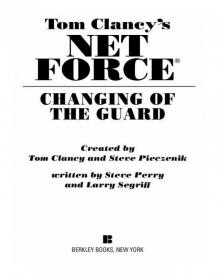 Changing of the Guard
Changing of the Guard Clear and Present Danger
Clear and Present Danger Hounds of Rome
Hounds of Rome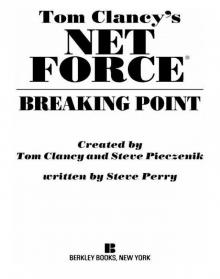 Breaking Point
Breaking Point Tom Clancy's Jack Ryan Books 7-12
Tom Clancy's Jack Ryan Books 7-12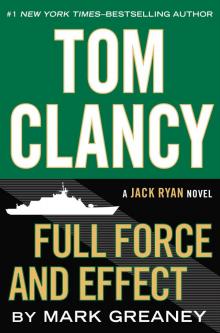 Full Force and Effect
Full Force and Effect The Archimedes Effect
The Archimedes Effect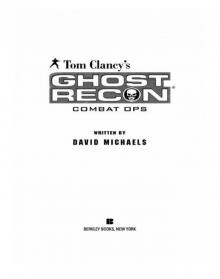 Combat Ops
Combat Ops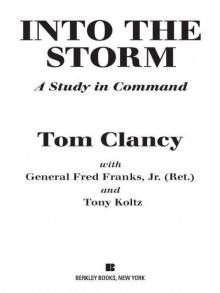 Into the Storm: On the Ground in Iraq
Into the Storm: On the Ground in Iraq Under Fire
Under Fire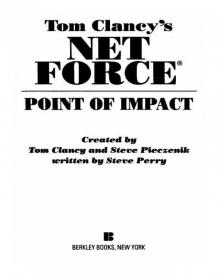 Point of Impact
Point of Impact Red Rabbit
Red Rabbit Rainbow Six
Rainbow Six The Hunt for Red October
The Hunt for Red October The Teeth of the Tiger
The Teeth of the Tiger Conviction (2009)
Conviction (2009)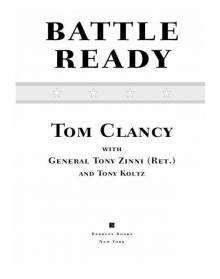 Battle Ready
Battle Ready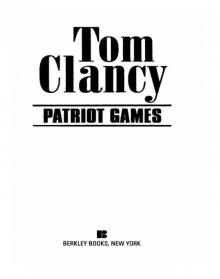 Patriot Games
Patriot Games The Sum of All Fears
The Sum of All Fears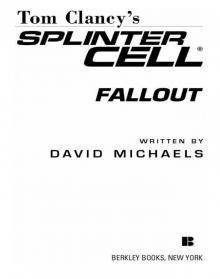 Fallout (2007)
Fallout (2007) Red Storm Rising
Red Storm Rising The Cardinal of the Kremlin
The Cardinal of the Kremlin Executive Orders
Executive Orders Lincoln, the unknown
Lincoln, the unknown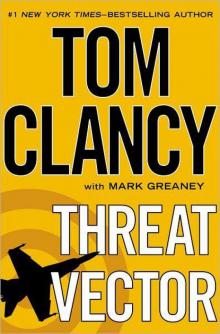 Threat Vector
Threat Vector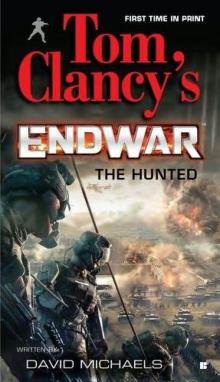 The Hunted
The Hunted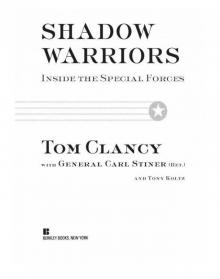 Shadow Warriors: Inside the Special Forces
Shadow Warriors: Inside the Special Forces End Game
End Game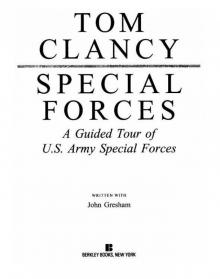 Special Forces: A Guided Tour of U.S. Army Special Forces
Special Forces: A Guided Tour of U.S. Army Special Forces Locked On
Locked On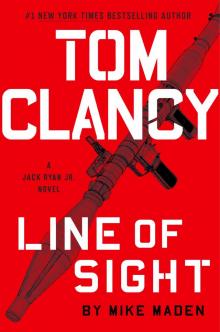 Line of Sight
Line of Sight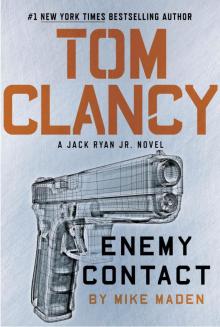 Tom Clancy Enemy Contact - Mike Maden
Tom Clancy Enemy Contact - Mike Maden Fighter Wing: A Guided Tour of an Air Force Combat Wing
Fighter Wing: A Guided Tour of an Air Force Combat Wing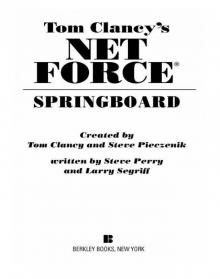 Springboard
Springboard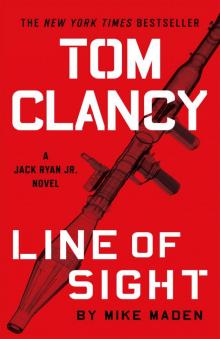 Line of Sight - Mike Maden
Line of Sight - Mike Maden EndWar
EndWar Dead or Alive
Dead or Alive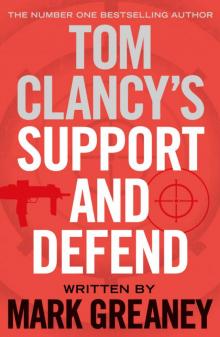 Tom Clancy Support and Defend
Tom Clancy Support and Defend Checkmate
Checkmate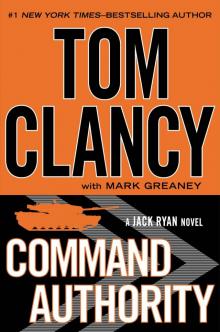 Command Authority
Command Authority Carrier: A Guided Tour of an Aircraft Carrier
Carrier: A Guided Tour of an Aircraft Carrier Blacklist Aftermath
Blacklist Aftermath Marine: A Guided Tour of a Marine Expeditionary Unit
Marine: A Guided Tour of a Marine Expeditionary Unit Commander-In-Chief
Commander-In-Chief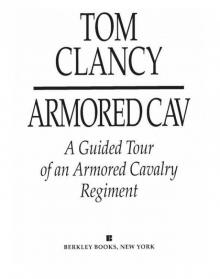 Armored Cav: A Guided Tour of an Armored Cavalry Regiment
Armored Cav: A Guided Tour of an Armored Cavalry Regiment Tom Clancy's Jack Ryan Books 1-6
Tom Clancy's Jack Ryan Books 1-6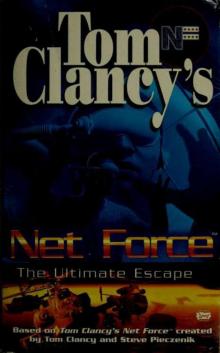 The Ultimate Escape
The Ultimate Escape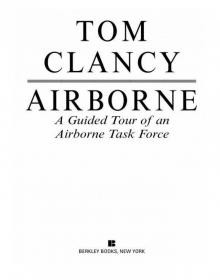 Airborne: A Guided Tour of an Airborne Task Force
Airborne: A Guided Tour of an Airborne Task Force Debt of Honor
Debt of Honor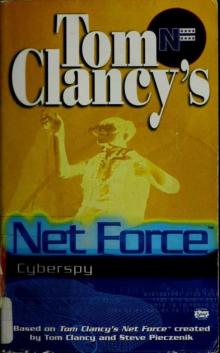 Cyberspy
Cyberspy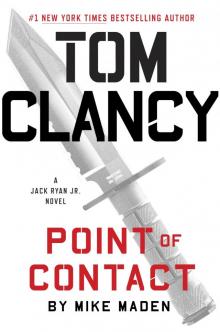 Point of Contact
Point of Contact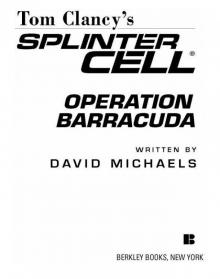 Operation Barracuda (2005)
Operation Barracuda (2005)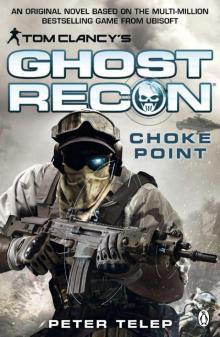 Choke Point
Choke Point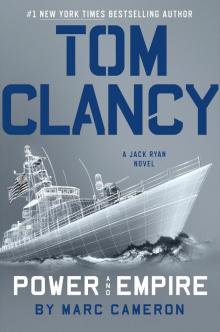 Power and Empire
Power and Empire Every Man a Tiger: The Gulf War Air Campaign
Every Man a Tiger: The Gulf War Air Campaign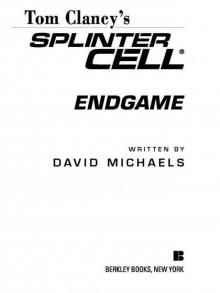 Endgame (1998)
Endgame (1998)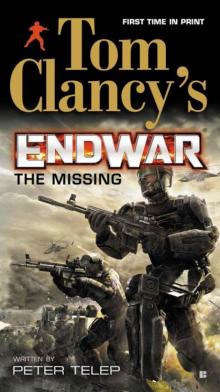 EndWar: The Missing
EndWar: The Missing Splinter Cell (2004)
Splinter Cell (2004) The Great Race
The Great Race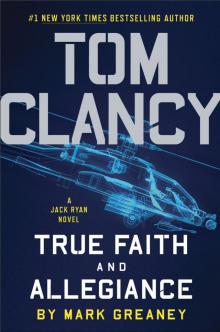 True Faith and Allegiance
True Faith and Allegiance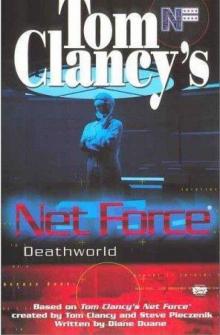 Deathworld
Deathworld Ghost Recon (2008)
Ghost Recon (2008)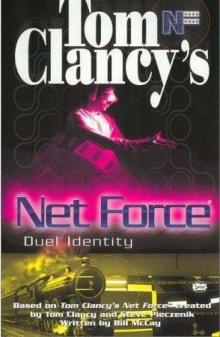 Duel Identity
Duel Identity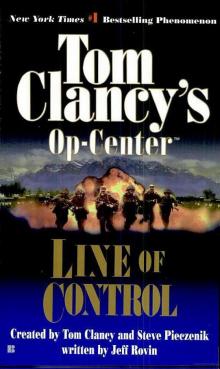 Line of Control o-8
Line of Control o-8 The Hunt for Red October jr-3
The Hunt for Red October jr-3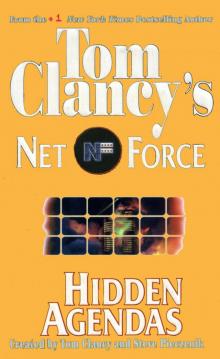 Hidden Agendas nf-2
Hidden Agendas nf-2 Acts of War oc-4
Acts of War oc-4 Ruthless.Com pp-2
Ruthless.Com pp-2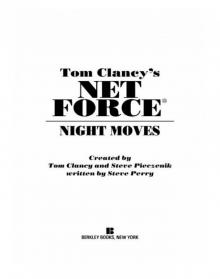 Night Moves
Night Moves The Hounds of Rome - Mystery of a Fugitive Priest
The Hounds of Rome - Mystery of a Fugitive Priest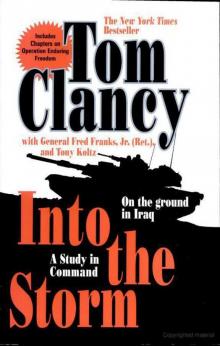 Into the Storm: On the Ground in Iraq sic-1
Into the Storm: On the Ground in Iraq sic-1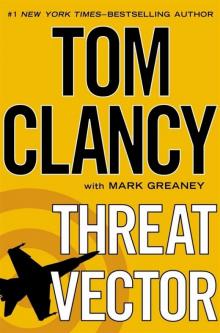 Threat Vector jrj-4
Threat Vector jrj-4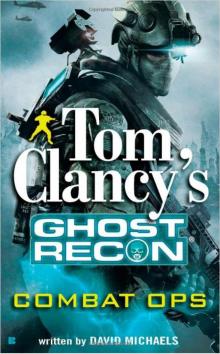 Combat Ops gr-2
Combat Ops gr-2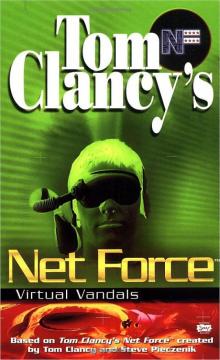 Virtual Vandals nfe-1
Virtual Vandals nfe-1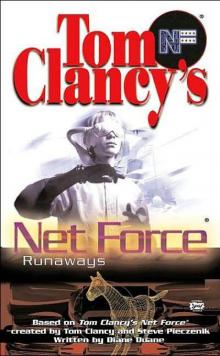 Runaways nfe-16
Runaways nfe-16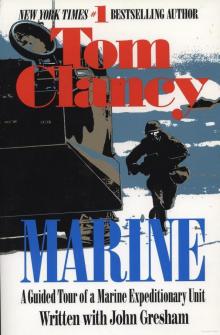 Marine: A Guided Tour of a Marine Expeditionary Unit tcml-4
Marine: A Guided Tour of a Marine Expeditionary Unit tcml-4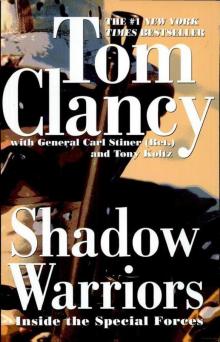 Shadow Warriors: Inside the Special Forces sic-3
Shadow Warriors: Inside the Special Forces sic-3 Jack Ryan Books 1-6
Jack Ryan Books 1-6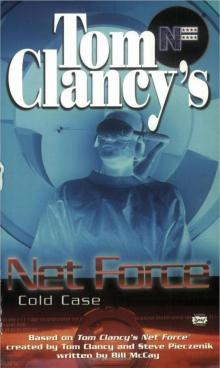 Cold Case nfe-15
Cold Case nfe-15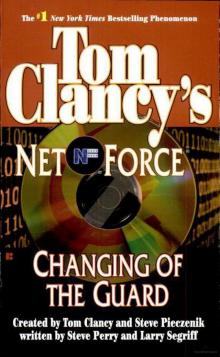 Changing of the Guard nf-8
Changing of the Guard nf-8 Splinter Cell sc-1
Splinter Cell sc-1 Battle Ready sic-4
Battle Ready sic-4 The Bear and the Dragon jrao-11
The Bear and the Dragon jrao-11 Fighter Wing: A Guided Tour of an Air Force Combat Wing tcml-3
Fighter Wing: A Guided Tour of an Air Force Combat Wing tcml-3 Patriot Games jr-1
Patriot Games jr-1 Jack Ryan Books 7-12
Jack Ryan Books 7-12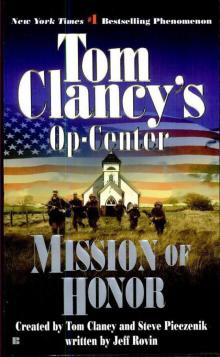 Mission of Honor o-9
Mission of Honor o-9 Private Lives nfe-9
Private Lives nfe-9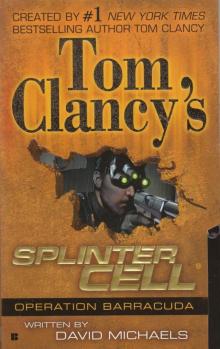 Operation Barracuda sc-2
Operation Barracuda sc-2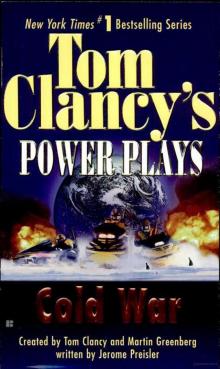 Cold War pp-5
Cold War pp-5 Point of Impact nf-5
Point of Impact nf-5 Red Rabbit jr-9
Red Rabbit jr-9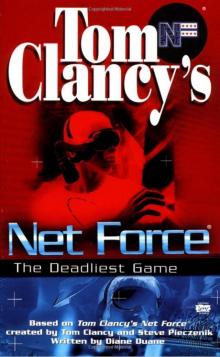 The Deadliest Game nfe-2
The Deadliest Game nfe-2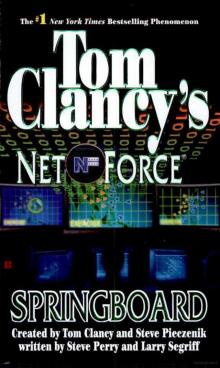 Springboard nf-9
Springboard nf-9 Safe House nfe-10
Safe House nfe-10 EndWar e-1
EndWar e-1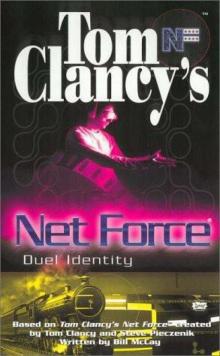 Duel Identity nfe-12
Duel Identity nfe-12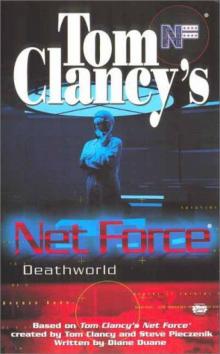 Deathworld nfe-13
Deathworld nfe-13 Politika pp-1
Politika pp-1 Rainbow Six jr-9
Rainbow Six jr-9 Tom Clancy's Power Plays 1 - 4
Tom Clancy's Power Plays 1 - 4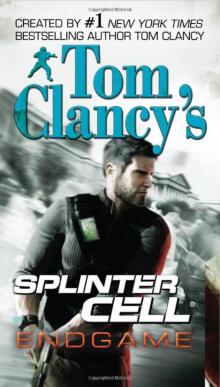 Endgame sc-6
Endgame sc-6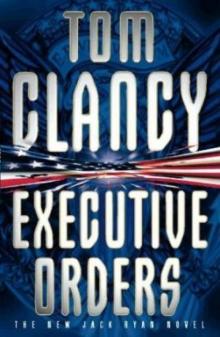 Executive Orders jr-7
Executive Orders jr-7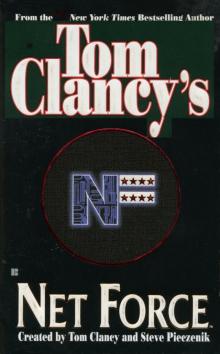 Net Force nf-1
Net Force nf-1 Call to Treason o-11
Call to Treason o-11 Locked On jrj-3
Locked On jrj-3 Against All Enemies
Against All Enemies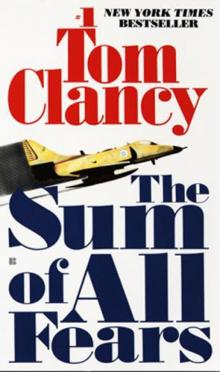 The Sum of All Fears jr-7
The Sum of All Fears jr-7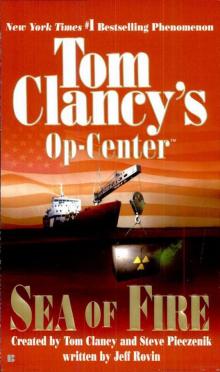 Sea of Fire o-10
Sea of Fire o-10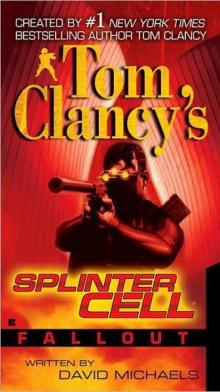 Fallout sc-4
Fallout sc-4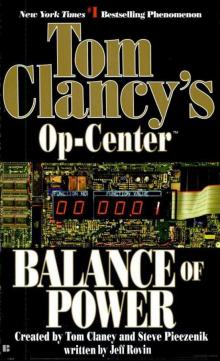 Balance of Power o-5
Balance of Power o-5 Shadow Watch pp-3
Shadow Watch pp-3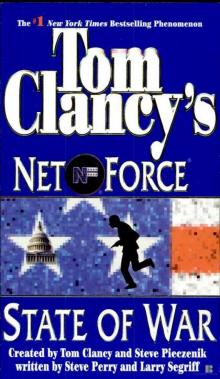 State of War nf-7
State of War nf-7 Wild Card pp-8
Wild Card pp-8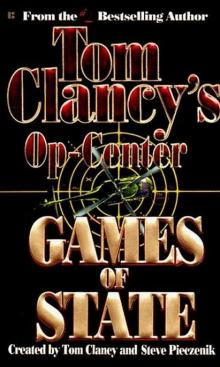 Games of State o-3
Games of State o-3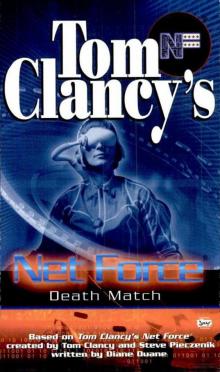 Death Match nfe-18
Death Match nfe-18 Against All Enemies mm-1
Against All Enemies mm-1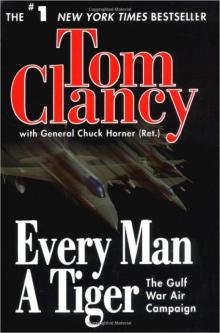 Every Man a Tiger: The Gulf War Air Campaign sic-2
Every Man a Tiger: The Gulf War Air Campaign sic-2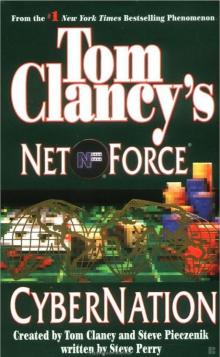 Cybernation nf-6
Cybernation nf-6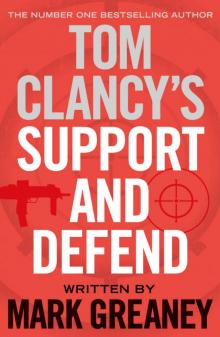 Support and Defend
Support and Defend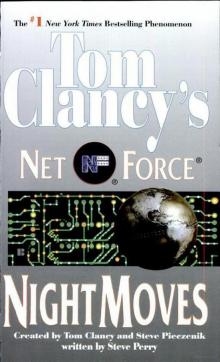 Night Moves nf-3
Night Moves nf-3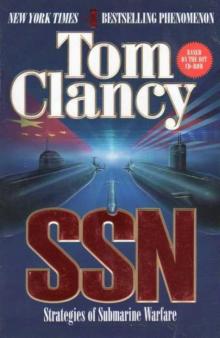 SSN
SSN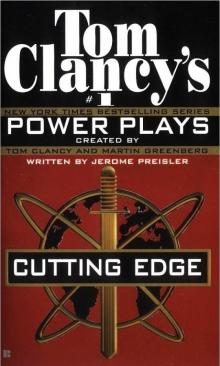 Cutting Edge pp-6
Cutting Edge pp-6 The Cardinal of the Kremlin jrao-5
The Cardinal of the Kremlin jrao-5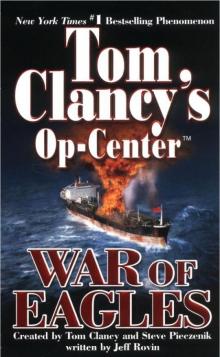 War of Eagles o-12
War of Eagles o-12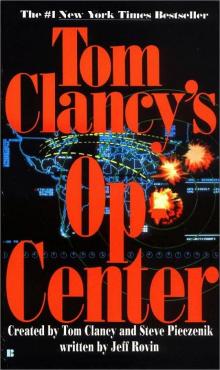 Op-Center o-1
Op-Center o-1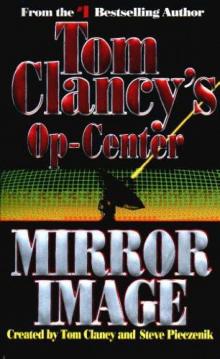 Mirror Image o-2
Mirror Image o-2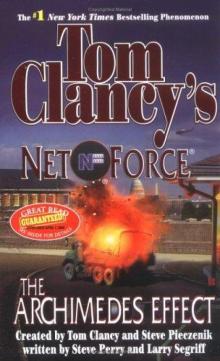 The Archimedes Effect nf-10
The Archimedes Effect nf-10 Teeth of the Tiger jrj-1
Teeth of the Tiger jrj-1 Bio-Strike pp-4
Bio-Strike pp-4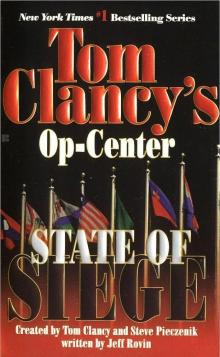 State of Siege o-6
State of Siege o-6 Debt of Honor jr-6
Debt of Honor jr-6 Zero Hour pp-7
Zero Hour pp-7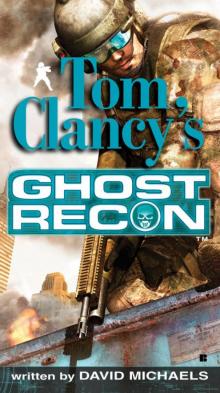 Ghost Recon gr-1
Ghost Recon gr-1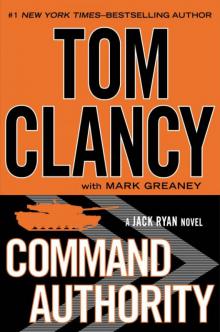 Command Authority jr-10
Command Authority jr-10 Tom Clancy's Power Plays 5 - 8
Tom Clancy's Power Plays 5 - 8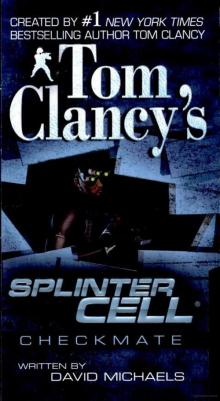 Checkmate sc-3
Checkmate sc-3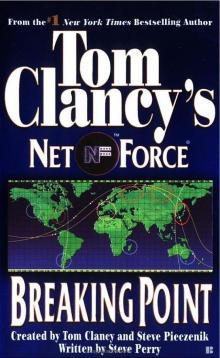 Breaking Point nf-4
Breaking Point nf-4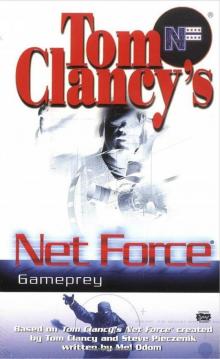 Gameprey nfe-11
Gameprey nfe-11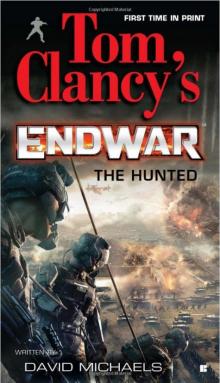 The Hunted e-2
The Hunted e-2 Hidden Agendas
Hidden Agendas Divide and Conquer o-7
Divide and Conquer o-7